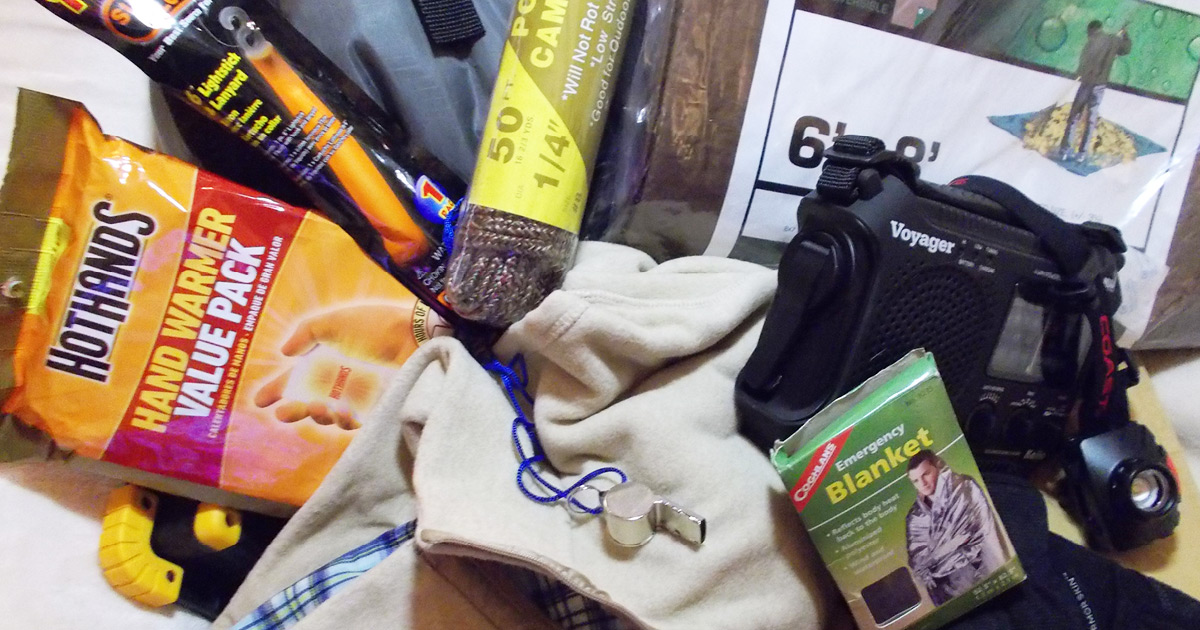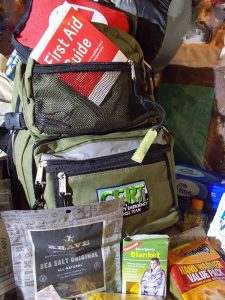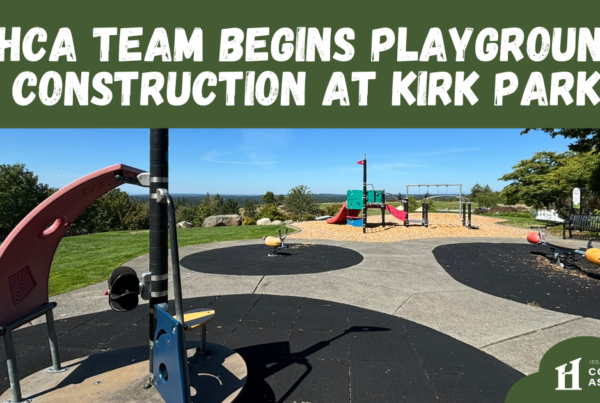
In 2019, Connections ran a year-long series by CERT Team 9 member and Issaquah Highlands resident Amanda Keverkamp on how to get your family ready for emergencies. The message then is just as important now. The following is an excerpt from that series, as published in March 2019.
This month, we’re going to put together our emergency kits. These kits (yes, kits plural) will be crucial for enduring the first few days after a disaster. It is recommended every family member have kits at home, in the car, and at work.
The key to these emergency kits is they are portable and easily carried. A backpack is the easiest and likely cheapest option. For kids, you can use old backpacks they’re no longer using. You can also combine all at-home items in a plastic tub or tote with a sealable lid. If space is limited, find a tote that will tuck under the bed.
As for the items you’ll want to include in your kit, there are essentials you’ll need to have, and there are items you’ll likely want to have.
- Food (freeze-dried camping meals and canned goods are ideal)
- Water
- First aid kit, including pain relievers, allergy medications, and gastrointestinal medications
- Whistle
- Flashlight and extra batteries
- Battery-powered or hand-crank radio with National Oceanic and Atmospheric Administration weather alerts
- Moist towelettes or hand sanitizer
- Wrench or pliers to turn off utilities
- Cell phone chargers and back up batteries
- Garbage bags and plastic ties for personal sanitation
- Emergency blanket
- Poncho
- Maps
- Walking shoes
Additional Supplies:
- Prescription medications
- Extra glasses, contacts, and contact lens solution
- Sleeping bag and/or warm blanket
- Change of clothing
- Heavy-duty work gloves
- Household chlorine bleach
- Fire extinguisher
- Matches or flint fire starter
- Infant formula, bottles, diapers, and wipes
- Pet food
- Personal hygiene items
- Mess kits (plates, cups, utensils)
- Paper and pencil
- Activities for all ages (books, cards, games, puzzles)
Cars kits should also have jumper cables, flares or reflective triangles, and a cell phone charger. It’s also good to have an ice scraper and cat litter for tire traction on hand in the winter months.
You might look at this list and think that you’re OK because you have most of these household items around the house. While that is a start, the point of an emergency kit is to gather these items in one location for quick access. I’d rather not be rummaging through the cupboards in the middle of the night trying to find a flashlight after an earthquake. You can find the items you don’t have on hand at stores that sell camping equipment.
Putting together a family emergency kit is also a great way to involve the kids in emergency readiness. Help them pick out an extra set of clothes and activities to include in their kits, and together find a location to store their kits.
You can also make it easier on yourself and purchase a complete kit through any number of retailers. For more information on building your kit, visit Ready.gov.
Photos provided by Amanda Keverkamp.






